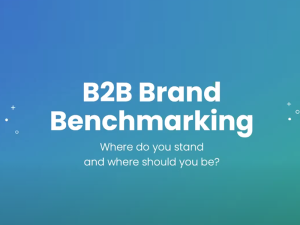We often get asked “when you should do a rebrand?” and the answer is different for different organisations, but in this article we’re going to try and give you some general guidelines that will help you make the decision.
The Rebrand Trigger
So a rebrand should always happen in response to a major shift in the business. So that might be a cultural shift, a strategic shift. It might be a shift in your offering, but there has to be something seriously that’s changed in order to merit doing a rebrand.
Now that shift may have come from a number of different places. It might be something that’s happened as a result of a conscious decision in the business to change direction. It might have been something that’s happened organically over time that you didn’t necessarily see coming, you’re just suddenly aware. A little bit like when your jeans get too tight, you’re not 100% sure when that happened, but it just sort of you’ve been slowly inching across and then suddenly find you’re not comfortable anymore.
It could have come from something positive, like you’ve acquired a new business or you brought out a new product range or something like that. Or it could potentially be from something quite negative. If you’ve had a really rough time, for example you’ve had a trouble delivering on your customer experience. A rebrand might be a response to that.
Rebrand Strategy
In order to measure the commercial benefit of a rebrand, you have to have a clear strategy before you start. Strategy gets bandied around a lot and I’m not a mad fan of it as a word. What we’re really talking about here is identifying what in your business is broken prior to the rebrand that you’re hoping that the rebrand will fix. You understand how you think the rebrand is going to fix it and you have a way of measuring that.So that you can say definitively after your rebrand project has completed, that this has been achieved and this might be something that you measure over the course of years as opposed to months.
Why Not To Rebrand
In general, rebrands are huge, huge projects and for that reason we generally advise against just refreshing your logo or colour palette on the grounds that all of your team are sick of looking at them. That’s not generally a smart way to do it. However, if you’ve got a clear strategic rationale, sometimes just refreshing the look of things can have the desired effect. An example of where a sort of modernising, design refresh type rebrand might work would be in the case of if you had an ageing customer population for your particular product, service, whatever it was. And you’re starting to lose market share because your brand is not able to penetrate into the younger demographic.
At that point you might for instance, consider doing a kind of modern design refresh of your brand just to try, and get to appeal to that sort of younger customer. But that’s not just “oh, we’re bored and we want to make it look nicer”. That’s very much “we’re going after this younger customer and we know based on our research that they are going to want this younger looking brand in order to buy from us”. You then obviously go on to do that and to measure the uptick in business from that particular demographic and the impact on your market share that it’s having.
Are You Ready To Rebrand?
The reason that we so say that you’ve got to have these kind of strategic reasons and measurements in place is because rebrands are massive projects. There’s so much involved. One of our clients, for instance, thought that it would take them a couple of weeks to do their rebrand. It took them in that excess of three months. They ended up with two and a half thousand different objects of artwork associated with it.
When you actually start to scratch the surface and see how many things carry your logo, how many things sort of written documents that you’ve got that are customer facing or anything like that. When you actually start to map that out, you’ll find it’s a lot, lot bigger than you think and it’s a lot, lot more work and so there has to be a commercial reason for doing it.
And you have to be able to say at the end of it, “Okay, yeah, that was a big project. It cost money, cost time, but we’ve increased our market share with younger demographic by 20% and that is worth X million to the business.”










